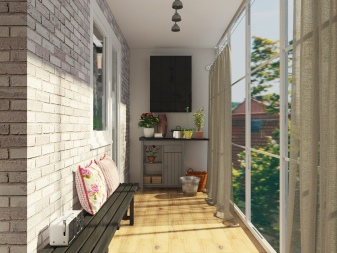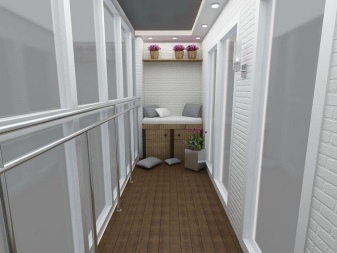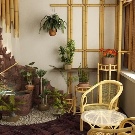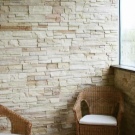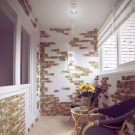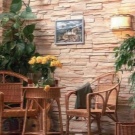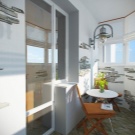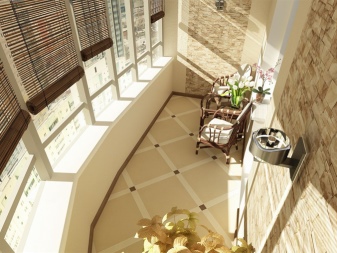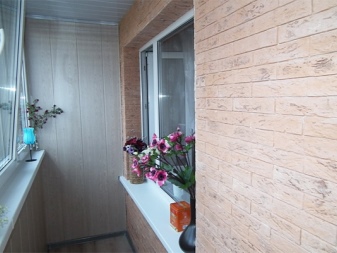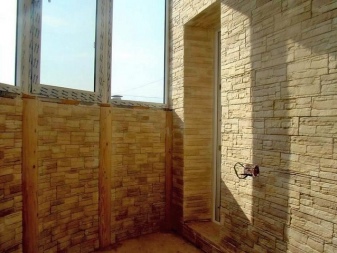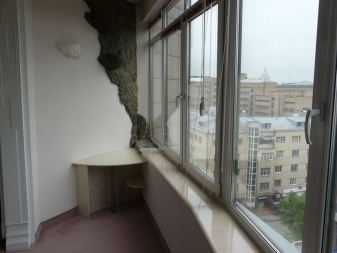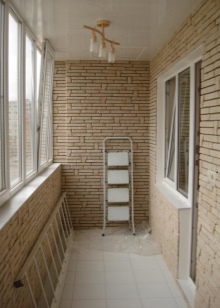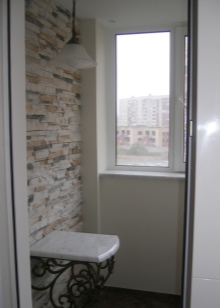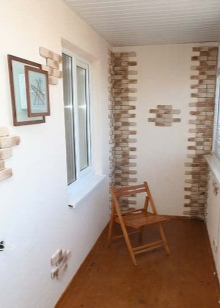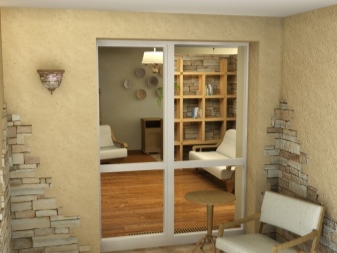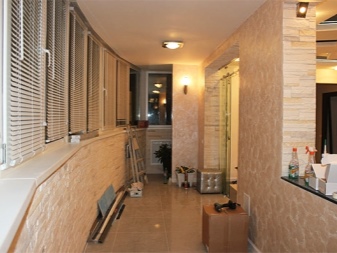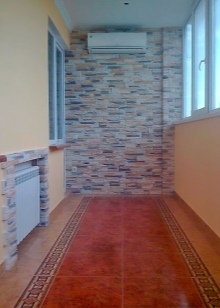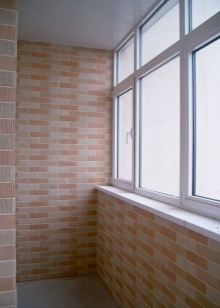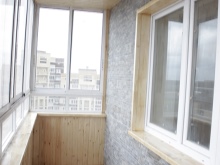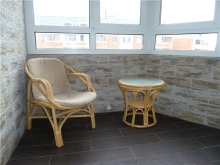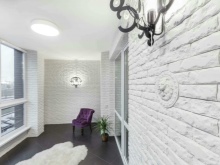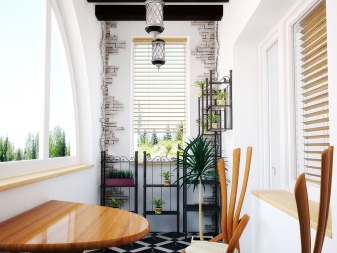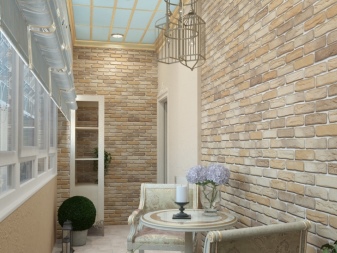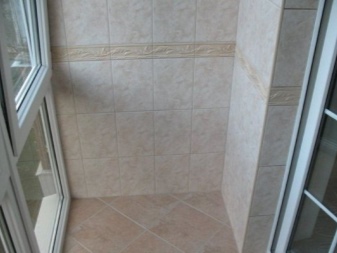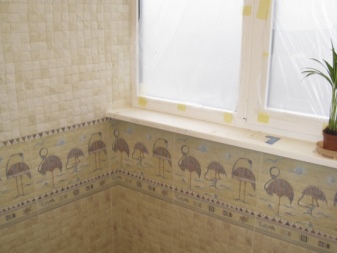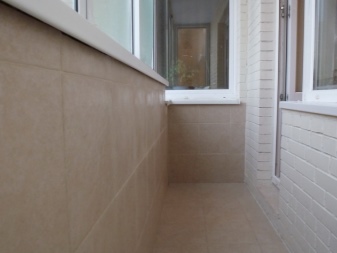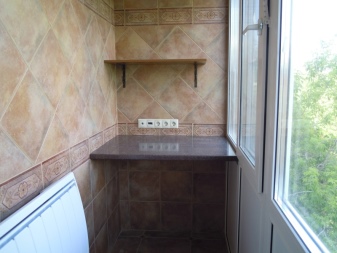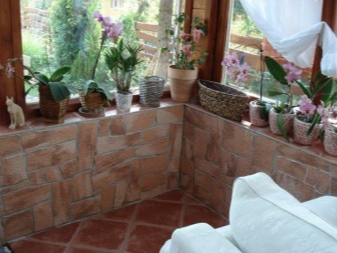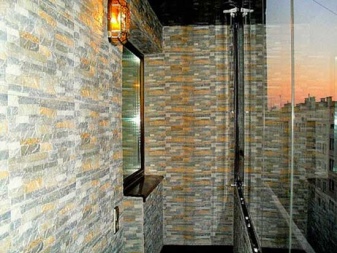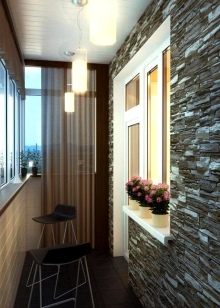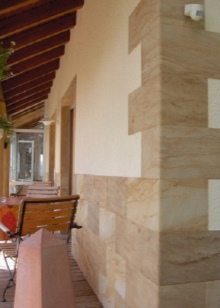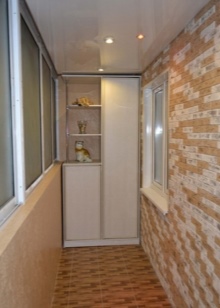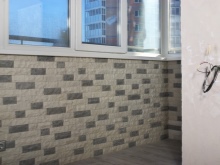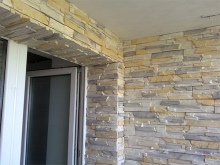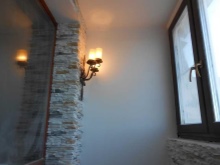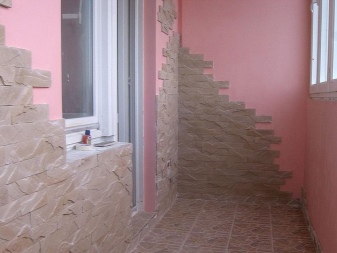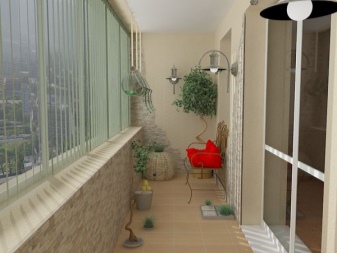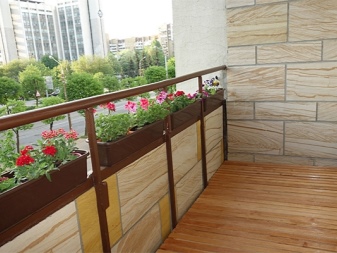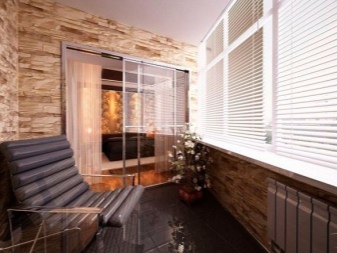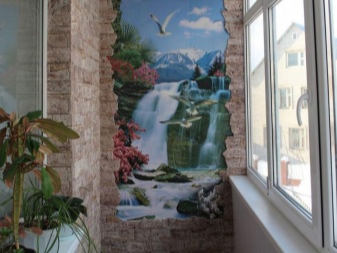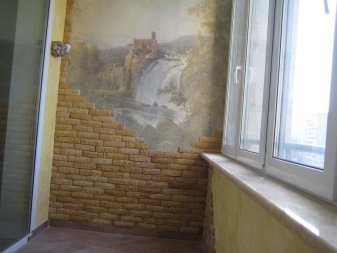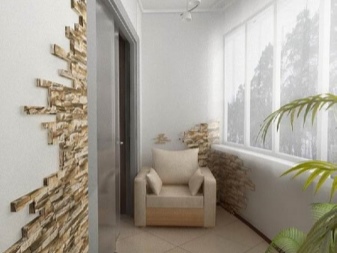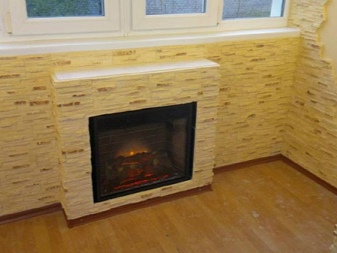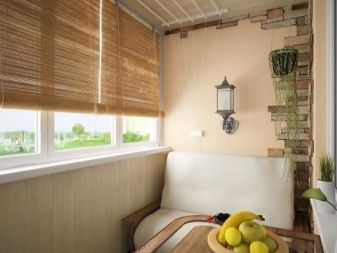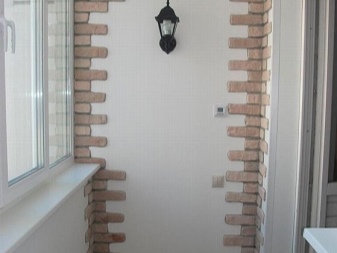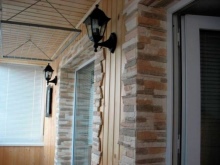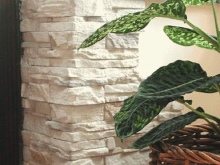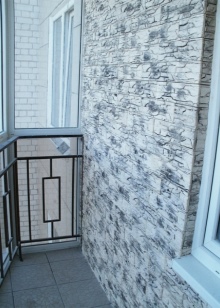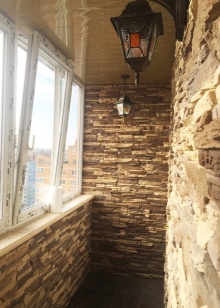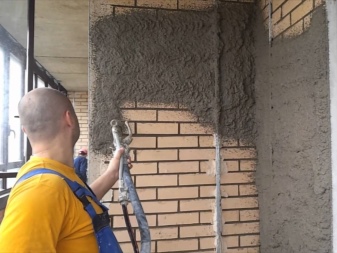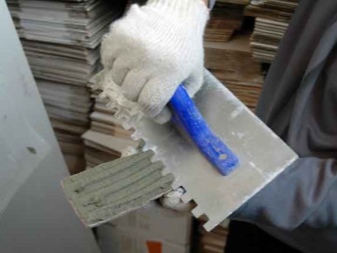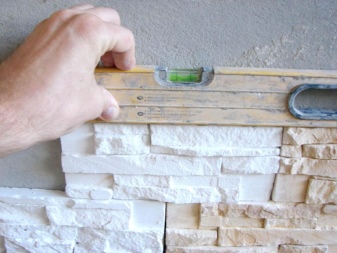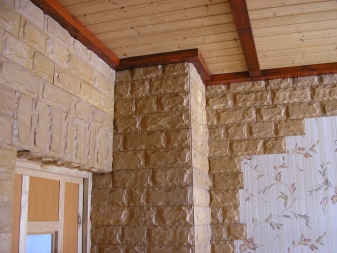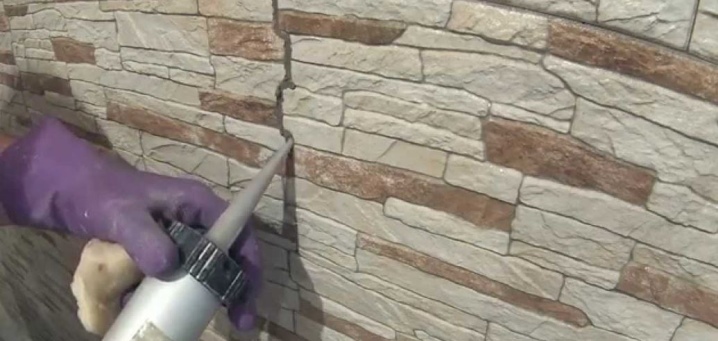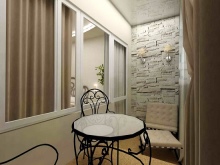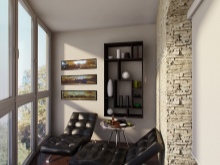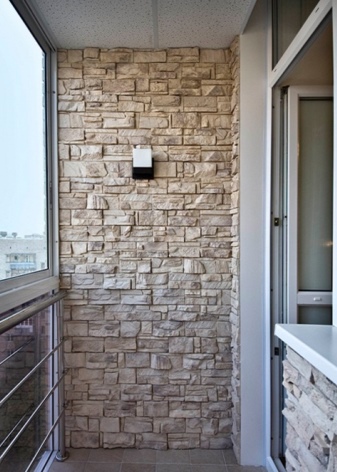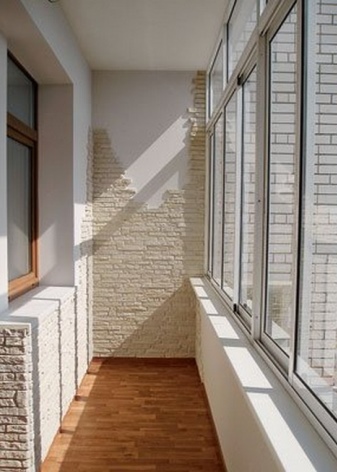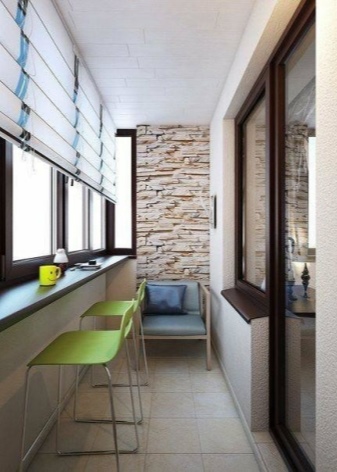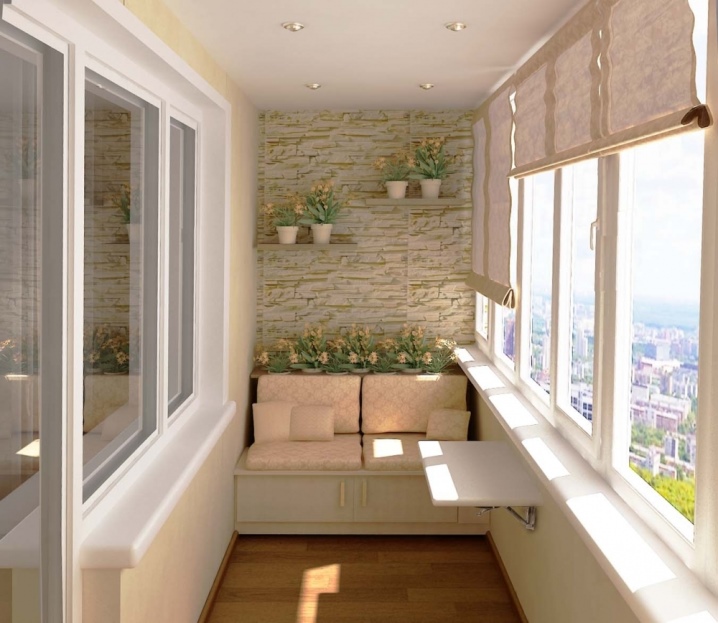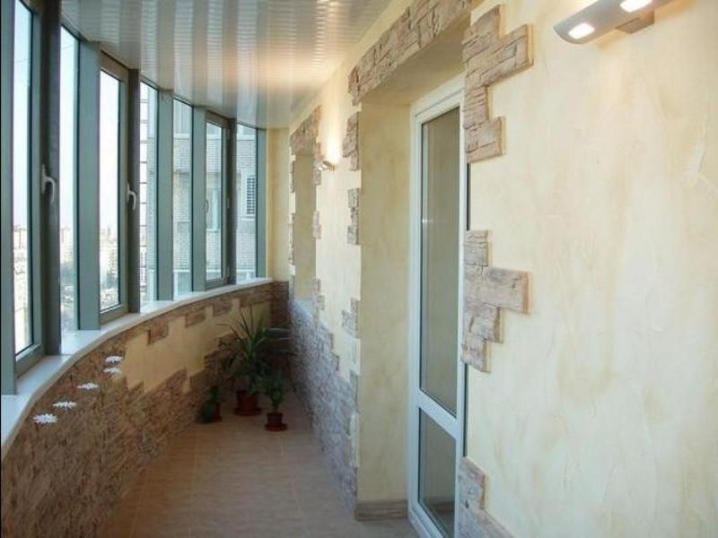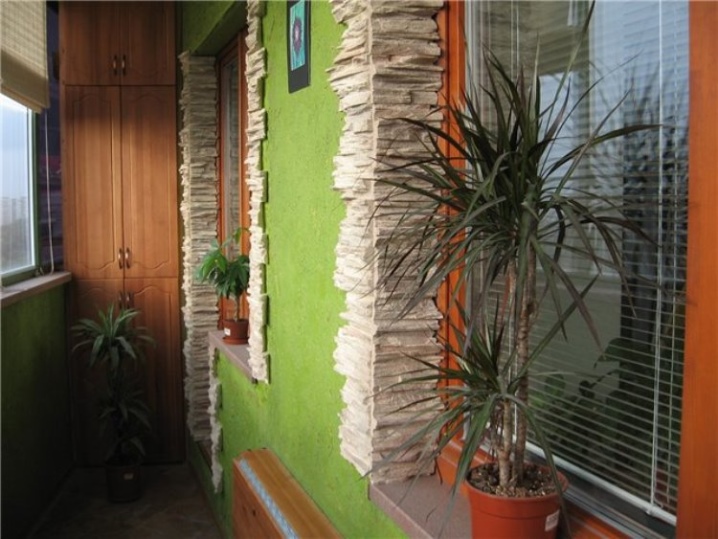Decorating the balcony with decorative stone
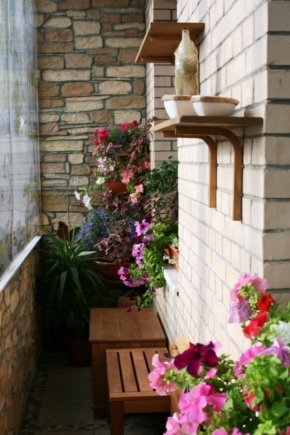
Natural stone has been used for construction and decoration for more than one hundred years. Many of its advantages (strength, hardness, excellent aesthetics) can not be overestimated. However, he also has certain properties that can significantly limit its use for decorating balconies in residential buildings - weight and price. The way out of this situation will be the use of decorative stone of artificial origin.
Advantages and disadvantages
Artificial stone is a mixture of cement, sand, binding agents, various fillers and plasticizers. Its physico-mechanical and operational characteristics directly depend on the composition of the material.Externally, the artificial analogue is very similar to the stone of natural origin.
Advantages of decorative stone:
- Durability, hardness, reliability, durability.
- Affordable price.
- A wide range of colors and textures.
- Quick and easy installation (no professional tools and a lot of experience are required, there is enough high-quality glue mix).
- Resistance to temperature extremes.
- Resistance to corrosion, water resistance.
- Excellent thermal insulation properties.
- Resistance to chemical reagents.
- Environmental friendliness, hypoallergenic.
- Gorgeous decorative properties.
- Resistance to the appearance of mold, fungus.
- Incombustible.
- Simplicity and ease of maintenance and care.
Such magnificent characteristics make decorative stone an almost ideal material for facing a balcony room. However, there are a few drawbacks that you should also pay attention to when choosing the right finish.
- A shorter service life compared to natural stone (the disadvantage is conditional, since the lifetime is estimated to be several tens of years).
- Some types of stone are very unstable to mechanical stress.
What to choose - artificial or natural?
When choosing a suitable material, it is necessary to carefully weigh all its advantages and disadvantages. Of course, finding a material that is stronger, safer and more beautiful than a natural stone is difficult, but its weight and high cost can be decisive factors in favor of choosing an artificial counterpart.
In addition, modern materials almost completely imitate the surface of natural stone, although they weigh and stand at the same time significantly less.
Comparative characteristics of natural and artificial stone:
- Artificial material is much cheaper than natural.
- Artificial analogue is presented in a wide range of sizes and thicknesses. This greatly facilitates the process of its installation.
- No need to strengthen the balcony.
- At installation the obreshetka is not required, the artificial stone is easily cut.
The range of decorative materials of artificial origin is very wide and diverse. Here are some of the most popular and used options:
- panels imitating natural marble, granite, quartz (the material has raw edges, natural chips, convex, curvilinear surface);
- panels imitating sandstone, limestone and other materials (smooth edges, flat surface);
- imitation of boulders and pebbles (rubble stone);
- brick imitation;
- imitation ground stone;
- material with patterns and combinations of shades not found in the natural environment.
Modern technologies of creation and processing of artificial stone allowed creating the widest range of beautiful and affordable options for facing balconies. Among them: granite, acrylic stone, conglomerates, artificial quartz and gypsum.
Porcelain tile - the most durable of the options presented. It consists of minerals, several grades of clay, feldspar, dyes. It looks like a tile made of very durable and high-quality glass, the surface is so smooth and smooth.
The conglomerates include granite chips, marble, lime chips, quartz, dyes. This material is characterized by high strength and wear resistance, resistance to temperature changes.
Acrylic has a low specific weight, so it is easy to handle and install. Presented in a wide range of colors.
Quartz is suitable for indoor and outdoor use. Maintains a large load and sudden changes in temperature.
Gypsum is the least durable material. It has a low coefficient of water resistance, therefore it is not recommended to use it on balconies without additional waterproofing.
Where to place?
One of the advantages of the decorative stone is its excellent compatibility with other finishing materials. This gives almost unlimited possibilities for creating interesting, complex, original designs of balconies.
Decorative stone can be used for cladding the entire interior space. It is best to choose the most lightweight materials of light, warm colors, otherwise a small room of the balcony will look very hard.
The most common interiors are combining stone and other materials (wallpaper, decorative plaster, paint).
It looks very interesting when a stone covers a part of a painted or plastered wall. It creates a feeling of unfinished brick or masonry.
A more rigorous option - the design of the inner corners with a stone. Masonry can be symmetrical or create a sense of raw angle with torn, jagged edges.
Decorative stone can be used for window or door openings, one or several walls. When combining materials of different textures, it is very important to choose the right color scheme.
Finishing stages
Decorative stone can be stacked on wooden, metal, foam block, brick, concrete and other types of surfaces.
The whole process of work on the design of the internal space of the balcony can be divided into several stages:
- Preparatory work. Before starting the main works, it is necessary to thoroughly examine the condition of the walls: eliminate irregularities, repair cracks, plaster or even level differences with the help of gypsum boards. Then it is necessary to prime the surface in 2-3 steps.
- Balcony finish. The main part of the work can be done in two ways: with jointing and in a seamless way. The first option is quite simple and even for novice masters. The small seams between the panels allow you to mask and hide small irregularities,arising in the course of work.
- Seamless version requires much more effort and training. During work, it is necessary to carefully ensure that excess glue does not fall on the outside of the tile, otherwise it will be very difficult to clean the porous, uneven material. But the finished surface will look smooth, solid, monolithic canvas without a single seam. The laying of the slab starts from the corner of the room.
- Laying. The most responsible and long stage. Hurry is excluded here. Before the start of direct installation, experienced builders first recommend laying out the panels on the floor in order to choose the most optimal design and play with shades of different panels. If possible, avoid too frequent repetition of patterns and color changes. In order not to get confused, you can number tiles on the reverse side.
- Then, around the perimeter of the room, the zero level is bounced off and a support is installed. (for it you can use, for example, fragments of a metal profile).
- Laying starts from the bottom up so that there is a whole slab under the ceiling. All trimming is done near the floor.
- For lining it is best to use white cement based glue. The composition using a comb is applied to the wall and a spatula with a thin layer on each tile. Then the tile is glued, tightly pressing it against the wall for several seconds. After the end of the first row begins laying the next. On a day, it is recommended to lay tiles no more than 1.5 meters in height. Excess glue is immediately removed.
After completion of the work, it is necessary to give the tile time for final fixation (12-48 hours, depending on the composition of the adhesive). Only after that proceed to grout the joints.
Reviews
The owners of balconies, who used decorative stone as a partial or complete decoration, willingly share their impressions on the pages of thematic sites. They note the magnificent aesthetic advantages of such a material that is not at all inferior to the beauty of natural stone. The ease and simplicity of installation, as well as the low weight of the panels are the undeniable advantages of artificial stone.
The rich choice of textures, colors and affordable cost make the choice in favor of this material almost obvious.
In addition, buyers note the excellent compatibility of decorative stone with wood, plaster, paint, wallpaper and other finishing materials.The interior, made in combination of these materials, looks really expensive, sophisticated and noble.
Design examples
A wonderful combination of materials different in texture in the interior of the balcony, decorated in the style of Provence. One of the walls is decorated with a decorative stone and decorated with floral arrangements. Delicate pastel colors help create a very cozy and warm atmosphere.
The combination of decorative stone and plaster looks extraordinarily original due to the asymmetric lining scheme. The way of registration at which the room looks artificially aged with a stone wall destroyed from time to time, is particularly popular today. An additional highlight of the balcony consists in its unusual form - sector.
Even a very small room can be beautifully decorated with the help of such a relief and bulk material as a decorative stone. For example, as in this case. The walls are finished with rich decorative plaster, and the window and door openings are lined with stone. It turned out very modern and beautiful interior.
